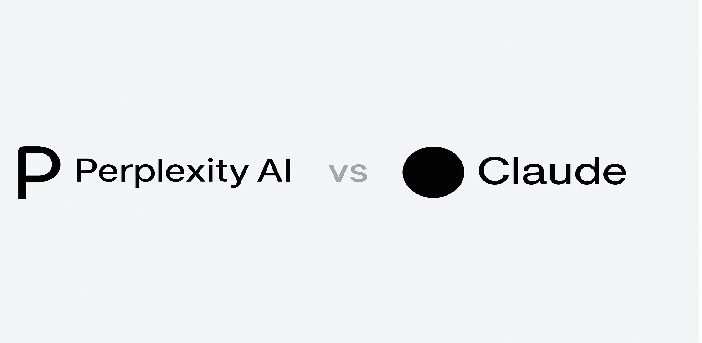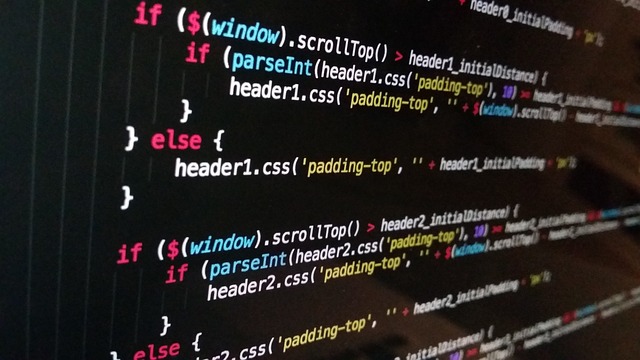Artificial Intelligence (AI) is rapidly reshaping the way businesses and researchers engage with data, decision-making, and user interactions. Among the standout AI platforms leading this evolution are Perplexity AI and Claude. Though both harness the power of large language models (LLMs), they are built with distinct objectives, technical frameworks, and use cases in mind. This in-depth blog post explores their architectural differences, core functionalities, real-world applications, and strategic advantages to help decision-makers select the most suitable AI platform for their unique operational goals.
The AI landscape is crowded with various tools and platforms, each vying to serve different niches. As AI becomes an essential layer in customer service, research, data analytics, and content generation, understanding the strengths and limitations of AI models like Perplexity AI and Claude is critical. This comparison isn’t about picking a winner but identifying alignment with specific needs.
Overview of Perplexity AI and Claude
Perplexity AI and Claude are two cutting-edge artificial intelligence platforms, each engineered to fulfill distinct roles within the AI landscape. Perplexity AI is primarily known for its precision in processing complex queries and synthesizing in-depth responses, making it a go-to tool for researchers, analysts, and professionals in data-intensive fields. In contrast, Claude, developed by Anthropic, is designed with a focus on conversational fluency and emotional intelligence, making it ideal for real-time customer interactions, virtual assistants, and applications where human-like engagement is critical. Both platforms harness advanced language models and deep learning techniques, but their core strengths and intended use cases diverge significantly—positioning them as complementary solutions rather than direct competitors.
What is Perplexity AI?
Perplexity AI is a cutting-edge AI system tailored for high-precision information retrieval and analysis. It leverages transformer-based architectures enriched with semantic attention layers to maintain context and handle complex queries. Ideal for research, regulatory compliance, and data synthesis, it is especially powerful when used for technical documentation and multi-source reference parsing.
What is Claude?
Developed by Anthropic, Claude is designed for fluent, natural, and safe conversations. Named presumably after Claude Shannon, a pioneer in information theory, it incorporates ethical guardrails and reinforcement learning for balanced, real-time conversational AI. Claude is perfect for customer engagement, virtual agents, and applications requiring social-emotional intelligence.
Core Functionalities and Design Philosophies
Both Perplexity AI and Claude are built upon powerful natural language processing architectures, but they are shaped by fundamentally different goals and design priorities. Perplexity AI is crafted with a heavy emphasis on analytical depth, tailored for users who need to extract precise, context-aware information from complex data. It is particularly well-suited for researchers, analysts, and professionals in domains like law, medicine, or engineering where accuracy and contextual integrity are non-negotiable. In contrast, Claude is architected around the principles of natural, emotionally intelligent communication. Its design philosophy centers on optimizing real-time interactions with users, making it ideal for customer support, personal assistants, and user engagement platforms. While Perplexity AI focuses on dissecting intricate language structures and preserving thematic continuity across extended conversations, Claude strives for conversational flow, adaptability in tone, and a more human-like responsiveness, aiming to mimic empathetic and intuitive human dialogue.
Perplexity AI: Precision in Contextual Analysis
- Optimized for multi-layered queries and complex documents.
- Maintains contextual coherence across long interactions.
- Ideal for analytical and research-centric applications.
Use Case Example: A biotech researcher evaluating trial results across multiple studies can use Perplexity to parse and correlate nuanced data involving drug interactions and molecular pathways.
Claude: Conversational Intelligence with Emotional Awareness
- Prioritizes natural dialogue flow and emotional intelligence.
- Real-time adaptation of tone, complexity, and engagement.
- Best suited for front-facing roles such as virtual support agents.
Use Case Example: A customer support agent powered by Claude can defuse tension during a billing issue by adjusting its tone and sentiment appropriately.
Technical Architectures
Both Perplexity AI and Claude are built on advanced transformer-based models, yet their underlying architectures are optimized for different operational goals. Perplexity AI leverages a hybrid model that combines dense neural networks with sparse expert pathways, allowing it to dynamically allocate computational resources based on query complexity. This results in high accuracy for multi-step reasoning tasks. In contrast, Claude employs a monolithic deep learning framework designed for low-latency processing, prioritizing speed and conversational fluidity. Its architecture supports real-time inference and adaptive learning, making it ideal for environments where responsiveness and user engagement are paramount.
Perplexity AI Architecture
- Hybrid model with dense neural networks and sparse expert systems.
- Advanced attention mechanisms for semantic linking.
- Integrated knowledge graphs containing 450+ million entity relationships.
Claude Architecture
- Monolithic LLM with 175B parameters.
- Built for real-time interaction (average 200ms latency).
- Reinforcement learning and adversarial fine-tuning enhance dialog flow.
Comparison:
- Perplexity shines in domain-specific depth.
- Claude excels in broad conversational coverage.
Training Data and Methodologies
Perplexity AI
- 68% of data sourced from peer-reviewed journals, patents, technical manuals.
- Less effective with informal or colloquial inputs.
- Focused on STEM, legal, and regulatory domains.
Claude
- Trained on over 450 billion tokens, including forums, support logs, and literature.
- Better at handling informal language and emotional context.
- Designed with safety and ethical constraints.
Comparison:
- Perplexity is ideal for academic rigor.
- Claude is robust for informal, real-time dialog systems.
Performance Metrics and Scalability
Understanding how Perplexity AI and Claude perform under varying operational loads is crucial for organizations making infrastructure and budgetary decisions. Performance metrics such as response latency, accuracy, and concurrency capacity offer insights into each platform’s suitability for different use cases. Scalability, in particular, plays a vital role in determining whether a system can maintain efficiency during peak usage. This section delves into quantitative benchmarks and architectural strengths that influence how these models behave in real-world deployment scenarios—from high-volume customer service centers to computationally intensive research environments.
Perplexity AI Benchmarks
- 94.7% accuracy on technical document summarization.
- 88.3% precision in academic cross-referencing tasks.
- 12.3-second average response time for complex queries.
Claude Benchmarks
- 97.1% user satisfaction rate in simulations.
- 850ms average response time.
- 83.4% accuracy in open-domain conversational tasks.
Scalability:
- Claude scales linearly to 10,000+ concurrent users.
- Perplexity handles 500 simultaneous queries but favors complexity over concurrency.
Integration and Implementation Ecosystems
Both Perplexity AI and Claude are designed with distinct integration strengths that reflect their core use cases. Perplexity AI offers robust APIs ideal for embedding into data-centric environments, allowing seamless connection with research tools, analytics platforms, and enterprise knowledge systems. It excels in scenarios that require high customization and tight alignment with proprietary databases. On the other hand, Claude provides a plug-and-play integration ecosystem with extensive support for popular customer engagement platforms, enabling rapid deployment in contact centers and customer-facing applications. Its modular design supports low-code environments, making it accessible to a broader range of technical teams.
Perplexity AI Integrations
- REST APIs for research pipelines and data workflows.
- Jupyter extensions for data science.
- Lacks out-of-the-box CRM integrations.
Claude Integrations
- Ready-made connectors for Salesforce, Twilio, Zendesk.
- Omnichannel support and dialogue state management.
- Faster deployment for customer-facing use cases.
Comparison:
- Perplexity supports deep integration into backend analysis systems.
- Claude is plug-and-play for front-office and customer support.
Cost Structures and ROI Considerations
When evaluating AI platforms like Perplexity AI and Claude, understanding cost structures is essential for aligning investments with long-term value. Perplexity AI typically incurs higher upfront costs due to its compute-intensive architecture and specialized data integration requirements, but it delivers high ROI in research-driven environments where precision outweighs speed. Claude, on the other hand, offers a more scalable, message-based pricing model, ideal for customer service and engagement-heavy applications. Its lower per-interaction cost and rapid deployment capabilities contribute to faster ROI in high-volume conversational use cases. Organizations must weigh these factors against their operational goals to determine the most cost-effective solution.
Perplexity AI Pricing
- $0.002/token for analytical queries.
- GPU-accelerated processing tiers.
- Volume discounts for over 10 million tokens/month.
Claude Pricing
- $0.0005/message for standard usage.
- Premium tiers for sentiment modulation and omnichannel capabilities.
- SLA-backed enterprise plans.
Total Cost of Ownership (TCO):
- Claude has 42% lower 3-year TCO in customer service settings.
- Perplexity is more economical for high-depth, low-volume research use.
Future Roadmaps and Innovation Trajectories
As artificial intelligence continues to evolve, both Perplexity AI and Claude are charting ambitious development paths aimed at expanding their core capabilities. Perplexity AI is investing heavily in multimodal data processing, including the integration of scientific diagrams and visual data into its analytical models—ideal for research-intensive fields. Additionally, it plans to introduce collaborative analysis tools for research teams and enhanced traceability for citation-heavy workflows. Meanwhile, Claude is prioritizing advancements in human-like interaction, with features such as real-time tone modulation, predictive conversation flow, and cultural adaptation modules. These enhancements will further position Claude as a frontrunner in empathetic AI-driven communication. As their roadmaps progress, the convergence of analytical rigor and conversational intelligence appears inevitable, opening up exciting possibilities for hybrid applications.
Perplexity AI Future Plans
- Multimodal input for charts, tables, and visual aids.
- Collaborative research features.
- Enhanced citation traceability and academic sourcing.
Claude’s Evolution
- Real-time voice tone modulation (Q4 2025).
- Predictive conversation modeling.
- Localization for cross-cultural applications.
Market analysts predict convergence in some features by 2028, though specialization will remain distinct.
Strategic Selection Guide
When to Choose Perplexity AI
- You’re in a research-intensive sector like biotech, law, or engineering.
- You need precise, citation-backed analysis.
- Your workflows involve compliance, data synthesis, or documentation.
When to Choose Claude
- Your use case involves frequent customer interaction.
- You operate across multiple support channels.
- You want emotionally aware and adaptive conversations.
Hybrid Strategy
Many enterprises benefit from a hybrid approach:
- Use Perplexity AI for backend knowledge generation.
- Use Claude for frontend user engagement.
This ensures analytical rigor paired with superior user experience.
Conclusion
Both Perplexity AI and Claude offer exceptional capabilities, but their strength lies in specialization. Perplexity AI is your go-to for analytical depth and technical precision, while Claude delivers unmatched fluidity in conversational applications. The right choice depends on your business objectives, resource allocation, and user experience goals. For organizations willing to invest in both, the synergy of these platforms can drive unprecedented efficiency and innovation across departments.
As AI continues to evolve, staying informed about each platform’s trajectory will be essential. Perplexity AI and Claude represent two sides of the same intelligent coin: knowledge and communication. Knowing when and how to deploy each is key to unlocking their full potential.






